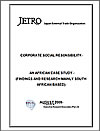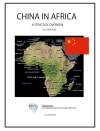BOP Report(Bottom of the Pyramid)
All data are collected in the Fiscal Year of 2008-2009.
10. Putting It All Together
Creating buying power, shaping aspirations, improving access, and tailoring local solutions — the four elements of the commercial infrastructure for the bottom of the pyramid are intertwined. Innovation in one leverages innovation in the others. Corporations are only one of the actors; MNCs must work together with NGOs, local and state governments, and communities.
Yet someone must take the lead to make this revolution happen. The question is, Why should it be MNCs?
Even if multinational managers are emotionally persuaded, it is not obvious that large corporations have real advantages over small, local organisations. MNCs may never be able to beat the cost or responsiveness of village entrepreneurs. Indeed, empowering local entrepreneurs and enterprises is key to developing Tier 4 markets. Still, there are several compelling reasons for MNCs to embark on this course:
- Resources. Building a complex commercial infrastructure for the bottom of the pyramid is a resource- and management-intensive task. Developing environmentally sustainable products and services requires significant research. Distribution channels and communication networks are expensive to develop and sustain. Few local entrepreneurs have the managerial or technological resources to create this infrastructure.
- Leverage. MNCs can transfer knowledge from one market to another — from China to Brazil or India — as Avon, Unilever, Citigroup, and others have demonstrated. Although practices and products have to be customised to serve local needs, MNCs, with their unique global knowledge base, have an advantage that is not easily accessible to local entrepreneurs.
- Bridging. MNCs can be nodes for building the commercial infrastructure, providing access to knowledge, managerial imagination, and financial resources. Without MNCs as catalysts, well-intentioned NGOs, communities, local governments, entrepreneurs, and even multilateral development agencies will continue to flounder in their attempts to bring development to the bottom. MNCs are best positioned to unite the range of actors required to develop the Tier 4 market.
- Transfer. Not only can MNCs leverage learning from the bottom of the pyramid, but they also have the capacity to transfer innovations up-market all the way to Tier 1. As we have seen, Tier 4 is a testing ground for sustainable living. Many of the innovations for the bottom can be adapted for use in the resource- and energy-intensive markets of the developed world.
It is imperative, however, that managers recognise the nature of business leadership required in the Tier 4 arena. Creativity, imagination, tolerance for ambiguity, stamina, passion, empathy, and courage may be as important as analytical skill, intelligence, and knowledge. Leaders need a deep understanding of the complexities and subtleties of sustainable development in the context of Tier 4. Finally, managers must have the interpersonal and intercultural skills to work with a wide range of organisations and people.
MNCs must build an organisational infrastructure to address opportunity at the bottom of the pyramid. This means building a local base of support, reorienting R&D to focus on the needs of the poor, forming new alliances, increasing employment intensity, and reinventing cost structures. These five organisational elements are clearly interrelated and mutually reinforcing.
- Build a local base of support. Empowering the poor threatens the existing power structure. Local opposition can emerge very quickly, as Cargill Inc. found in its sunflower-seed business in India. Cargill’s offices were twice burned, and the local politicians accused the firm of destroying locally based seed businesses. But Cargill persisted. Through Cargill’s investments in farmer education, training, and supply of farm inputs, farmers have significantly improved their productivity per acre of land. Today, Cargill is seen as the friend of the farmer. Political opposition has vanished.
To overcome comparable problems, MNCs must build a local base of political support. As Monsanto and General Electric Company can attest, the establishment of a coalition of NGOs, community leaders, and local authorities that can counter entrenched interests is essential. Forming such a coalition can be a very slow process. Each player has a different agenda; MNCs have to understand these agendas and create shared aspirations. In China, this problem is less onerous: The local bureaucrats are also the local entrepreneurs, so they can easily see the benefits to their enterprise and their village, town, or province. (See “Profits and Perils in China, Inc.,” First Quarter 2002.) In countries such as India and Brazil, such alignment does not exist. Significant discussion, information sharing, the delineation of benefits to each constituency, and sensitivity to local debates is necessary.
- Conduct R&D focused on the poor. It is necessary to conduct R&D and market research focused on the unique requirements of the poor, by region and by country. In India, China, and North Africa, for example, research on ways to provide safe water for drinking, cooking, washing, and cleaning is a high priority. Research must also seek to adapt foreign solutions to local needs. For example, a daily dosage of vitamins can be added to a wide variety of food and beverage products. For corporations that have distribution and brand presence throughout the developing world, such as Coca-Cola Company, the bottom of the pyramid offers a vast untapped market for such products as water and nutritionals.
Finally, research must identify useful principles and potential applications from local practices. In Tier 4, significant knowledge is transmitted orally from one generation to the next. Being respectful of traditions but willing to analyse them scientifically can lead to new knowledge. The Body Shop’s creative CEO, Ms. Roddick, built a business predicated on understanding the basis for local rituals and practices. For example, she observed that some African women use slices of pineapple to cleanse their skin. On the surface, this practice appears to be a meaningless ritual. However, research showed active ingredients in pineapple that cleared away dead skin cells better than chemical formulations.
MNCs must develop research facilities in emerging markets such as China, India, Brazil, Mexico, and Africa, although few have made a big effort so far. Unilever is an exception; it operates highly regarded research centres in India, employing more than 400 researchers dedicated to the problems of “India-like markets.”
- Form new alliances. MNCs have conventionally formed alliances solely to break into new markets; now they need to broaden their alliance strategies. By entering into alliances to expand in Tier 4 markets, MNCs gain insight into developing countries’ culture and local knowledge. At the same time, MNCs improve their own credibility. They may also secure preferred or exclusive access to a market or raw material. We foresee three kinds of important relationships: Alliances with local firms and cooperatives (such as the Khira District Milk Cooperative); alliances with local and international NGOs (like Starbucks’s alliance with Conservation International in coffee); and alliances with governments (e.g., Merck & Company’s recent alliance in Costa Rica to foster rain forest preservation in exchange for bioprospecting rights).
Given the difficulty and complexity of constructing business models dependent on relationships with national or central governments (e.g., large infrastructure development), we envision more alliances at the local and regional level. To succeed in such alliances, MNC managers must learn to work with people who may not have the same agenda or the same educational and economic background as they do. The challenge and payoff is how to manage and learn from diversity — economic, intellectual, racial, and linguistic.
- Increase employment intensity. MNCs accustomed to Tier 1 markets think in terms of capital intensity and labor productivity. Exactly the opposite logic applies in Tier 4. Given the vast number of people at the bottom of the pyramid, the production and distribution approach must provide jobs for many, as in the case of Ruf & Tuf jeans from Arvind Mills: It employed an army of local tailors as stockers, promoters, distributors, and service providers, even though the cost of the jeans was 80 percent below that of Levi’s. As Arvind demonstrated, MNCs need not employ large numbers of people directly on their payroll, but the organisational model in Tier 4 must increase employment intensity (and incomes) among the poor and groom them to become new customers.
- Reinvent cost structures. Managers must dramatically reduce cost levels relative to those in Tier 1. To create products and services the poor can afford, MNCs must reduce their costs significantly — to, say, 10 percent of what they are today. But this cannot be achieved by fine-tuning the current approaches to product development, production, and logistics. The entire business process must be rethought with a focus on functionality, not on the product itself. For example, financial services need not be distributed only through branch offices open from 9 a.m. to 5 p.m. Such services can be provided at a time and place convenient to the poor consumer — after 8 p.m. and at their homes. Cash-dispensing machines can be placed in safe areas — police stations and post offices. Iris recognition used as a security device could substitute for the tedious personal-identification number and card for identification.
Lowering cost structures also forces a debate on ways to reduce investment costs. This will inevitably lead to greater use of information technology to develop production and distribution systems. As noted, village-based phones are already transforming the pattern of communications throughout the developing world. Add the Internet, and we have a whole new way of communicating and creating economic development in poor, rural areas. Creative use of IT will emerge in these markets as a means to dramatically lower the costs associated with access to products and services, distribution, and credit management.
目次
- 1. Reperceiving Business from the Bottom Up
- 2. Bop in Brief
- 3. Four Consumer Tiers
- 4. The Invisible Opportunity
- 5. Tier 4 Pioneer
- 6. Creating Buying Power
- 7. Shaping Aspirations
- 8. Improving Access
- 9. Tailoring Local Solutions
- 10. Putting It All Together
- 11. A Common Cause
- 12. BOP Experiments in the Field
- 13. A BOP Typology
- 14. What's Next for BOP?
- 15. How to Get Started: The Conceptual Framework for BOP Innovation
- 16. BoP Conferences
- 17. Case Studies and Relevant Reference Material
- Bibliography




